Dermal Fillers
Showing 25–36 of 88 results
-
Sale!

JUVEDERM® VOLBELLA with Lidocaine 2x1ml 15mg/ml, 3mg/ml 2-1ml prefilled syringes
Original price was: € 205.00.€ 196.00Current price is: € 196.00. Add to basket -
Sale!

JUVEDERM® VOLIFT with Lidocaine 17.5mg/ml, 3mg/ml 2-1ml prefilled syringes
Original price was: € 205.00.€ 196.00Current price is: € 196.00. Add to basket -
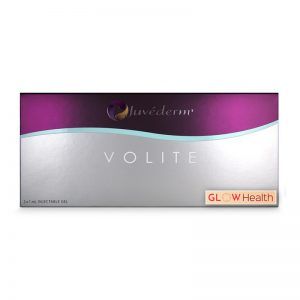
JUVEDERM® VOLITE with Lidocaine 12mg/ml, 3mg/ml 2-1ml prefilled syringes
€ 200.00 Add to basket -
Sale!
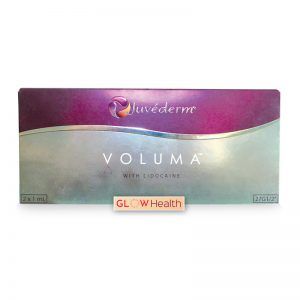
JUVEDERM® VOLUMA™ with Lidocaine 20mg/ml, 3mg/ml 2-1ml prefilled syringes
Original price was: € 205.00.€ 196.00Current price is: € 196.00. Add to basket -
Sale!

JUVEDERM® VOLUX with Lidocaine 2-1ml pre-filled syringes
Original price was: € 215.00.€ 205.00Current price is: € 205.00. Add to basket -
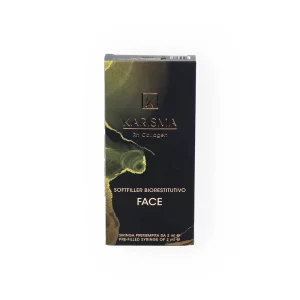
KARISMA RH COLLAGEN SOFTFILLER BIORESTITUTIVO FACE
€ 95.00 Add to basket -

LANLUMA® V
€ 173.88 Read more -
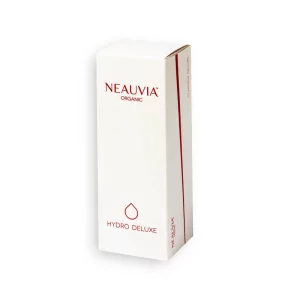
Neauvia Organic Hydro Deluxe
€ 115.00 Add to basket -
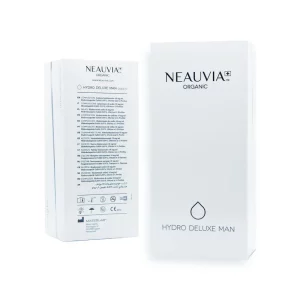
Neauvia Organic Hydro Deluxe Man
€ 98.00 Add to basket -
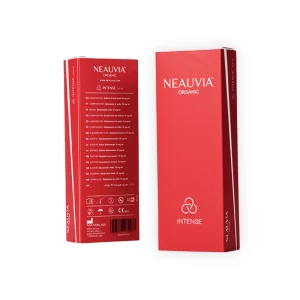
Neauvia Organic Intense
€ 75.00 Add to basket -
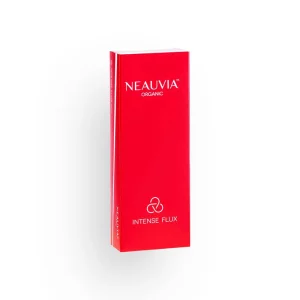
Neauvia Organic Intense Flux
€ 94.00 Add to basket -

Neauvia Organic Intense Lips
€ 75.00 Add to basket
Enhance your practice with dermal fillers, a versatile and effective solution for addressing the visible signs of aging in your patients. These injectable treatments work by filling in wrinkles and adding volume to areas such as the cheeks and lips, resulting in a refreshed and youthful appearance. Whether their goal is to plump lips, contour cheeks, or reduce nasolabial folds, our range of dermal fillers is tailored to meet the specific needs of each client.
Buy dermal fillers today and provide your clients with beautiful immediate results with minimal downtime - and a boost of confidence!
Dermal fillers have revolutionised the world of cosmetic enhancement, providing a non-surgical solution to achieve a youthful and rejuvenated appearance. Whether your clients seek to restore facial volume, smooth out fine lines, or enhance lips and cheeks, dermal fillers offer a versatile and effective solution tailored to their unique needs.
Dermal fillers are injectable substances designed to add volume, smooth wrinkles, and enhance facial contours. By filling in areas beneath the skin, these fillers help plump up and smooth out wrinkles and folds, effectively addressing signs of aging and leaving the skin looking fresh and vibrant.
And, while primarily used to restore facial volume and smooth out wrinkles, these versatile treatments provide medical professionals with numerous options to address various aesthetic concerns, including:
Yes, the FDA has approved several dermal fillers for adults aged 22 and older for specific purposes:
The FDA does not approve dermal fillers for increasing breast size, buttock augmentation, feet augmentation, or implantation into bone, tendon, ligament, or muscle.
There are a couple of categorisations of dermal filler types. There’s a categorisation of dermal filler according to the area of usage, such as lip fillers, cheek volume restoration, wrinkle reduction, nose asymmetry correction, hair loss fillers, etc…. And there’s also a categorisation according to the main ingredient of the dermal filler. Most commonly it’s one of the following:
Different types of dermal fillers offer specific advantages and applications. Healthcare providers must meticulously choose the appropriate filler based on individual patient needs, taking into account factors like desired outcomes, patient age, and skin characteristics.
Our store offers a wide range of dermal filler brands tailored to meet different aesthetic needs.
Dermal fillers provide numerous benefits:
Typically, most dermal fillers last between 6 to 18 months before requiring re-injection, but the duration varies depending on the type and treatment area. Hyaluronic acid fillers, commonly used, generally last between 6 to 12 months. Calcium hydroxylapatite and poly-L-lactic acid fillers may last 12 to 18 months, whereas PMMA fillers can provide results lasting several years.
While generally safe, dermal fillers can cause side effects such as:
These side effects are only temporary and usually subside within a few days.
More severe reactions, although rare, can occur in some cases. Such complications may include allergic reactions, the formation of lumps, asymmetry, or infection… The healthcare provider must inform the patient about these risks.
Dermal fillers are increasingly popular due to their quick procedure, typically under 30 minutes. While patients can resume normal activities soon after treatment, adhering to some aftercare recommendations is important for optimal results.
After receiving dermal fillers, patients should:
These precautions help decrease the chances of swelling and bruising. They also help let filler settle into place, without any shifting.
Although dermal fillers are gaining immense popularity, not everyone is a candidate for the procedure. They are not recommended for:
Healthcare providers must discuss patients’ medical history before undergoing any cosmetic treatment to ensure their safety and well-being.
Licensed medical professionals, dermatologists, and aesthetic clinics can easily buy dermal fillers online from our website. At Glow Health, we offer a diverse selection of the best products tailored to meet all your clients' aesthetic needs.
Is it safe to buy dermal fillers online?
Yes, if you ensure products are FDA-approved, sourced from reputable suppliers, and purchased under medical guidance. If you cannot guarantee the authenticity and safety of the products, then it poses a significant risk.
Can you buy filler and do it yourself?
No, it is unsafe to self-administer dermal fillers. Always consult a qualified professional for safe and effective treatment in order to avoid health risks and ensure great, desired results.
What is the most popular filler in Europe?
Hyaluronic acid fillers like Juvederm and Restylane are highly popular in Europe due to their effectiveness and safety.
What fillers last 3 years?
Certain fillers, such as poly-L-lactic acid (Sculptra) and calcium hydroxylapatite (Radiesse), can last up to three years, depending on the individual and the treatment area.
What age is best to get fillers?
The ideal age for fillers varies depending on individual needs and goals. Generally, people start in their late 20s to early 30s to address initial signs of aging. Consult a professional for personalised advice based on your skin's unique needs.
Is it OK to get fillers every year?
Yes, for most fillers it’s generally safe, and even recommended, to get fillers annually. Consulting a healthcare provider ensures proper assessment and treatment planning for optimal results and safety, as maintenance frequency depends on individual skin needs and the type of filler used.
Buy dermal fillers today and provide your clients with beautiful immediate results with minimal downtime - and a boost of confidence!
Buy Dermal Fillers and Provide Your Clients with Tailored Solutions for Confidence-Boosting Results
Dermal fillers have revolutionised the world of cosmetic enhancement, providing a non-surgical solution to achieve a youthful and rejuvenated appearance. Whether your clients seek to restore facial volume, smooth out fine lines, or enhance lips and cheeks, dermal fillers offer a versatile and effective solution tailored to their unique needs.
What Are Dermal Fillers?
Dermal fillers are injectable substances designed to add volume, smooth wrinkles, and enhance facial contours. By filling in areas beneath the skin, these fillers help plump up and smooth out wrinkles and folds, effectively addressing signs of aging and leaving the skin looking fresh and vibrant.
And, while primarily used to restore facial volume and smooth out wrinkles, these versatile treatments provide medical professionals with numerous options to address various aesthetic concerns, including:
- Enhancing lip volume and definition for a fuller, more youthful appearance
- Contouring the cheeks and jawline to create a more sculpted facial profile
- Softening the appearance of acne scars and other facial depressions
- Filling in hollow areas under the eyes to reduce the appearance of dark circles and tiredness
- Correcting asymmetry in facial features for a more balanced look
- Treating wrinkles and lines on the hands to rejuvenate their appearance
Are Dermal Fillers FDA Approved?
Yes, the FDA has approved several dermal fillers for adults aged 22 and older for specific purposes:
- Absorbable (temporary) fillers: Approved for moderate to severe facial wrinkles, nasolabial folds, and lip, cheek, chin, and hand volume enhancement.
- Non-absorbable (permanent) fillers: Approved for nasolabial folds and cheek acne scars.
- Other approved uses include facial fat loss correction in HIV patients and addressing contour deficiencies like wrinkles and acne scars.
The FDA does not approve dermal fillers for increasing breast size, buttock augmentation, feet augmentation, or implantation into bone, tendon, ligament, or muscle.
Dermal Filler Types
There are a couple of categorisations of dermal filler types. There’s a categorisation of dermal filler according to the area of usage, such as lip fillers, cheek volume restoration, wrinkle reduction, nose asymmetry correction, hair loss fillers, etc…. And there’s also a categorisation according to the main ingredient of the dermal filler. Most commonly it’s one of the following:
- Hyaluronic Acid (HA), the most popular type, is based on a natural substance found in body tissues combined with water to form a gel, providing a smoothing and filling effect. These types of fillers are temporary as the body eventually absorbs them.
- Calcium Hydroxylapatite (CaHA), which is based on a mineral-like compound found in human bones, biosynthetically produced to minimize allergic reactions, and no skin testing is required.
- Poly-L-lactic Acid (PLLA) is not absorbed by the body, but it is a biodegradable, biocompatible polymer used in dissolvable stitches and soft tissue implants.
- Polymethylmethacrylate (PMMA), which is non-biodegradable, biocompatible polymer used in bone cement and intraocular lenses.
Different types of dermal fillers offer specific advantages and applications. Healthcare providers must meticulously choose the appropriate filler based on individual patient needs, taking into account factors like desired outcomes, patient age, and skin characteristics.
Top Dermal Filler Brands
Our store offers a wide range of dermal filler brands tailored to meet different aesthetic needs.
- Belotero: Known for its smooth integration into the skin, Belotero offers a range of hyaluronic acid fillers that effectively treat fine lines and wrinkles with natural-looking results.
- Juvederm: One of the most popular hyaluronic acid filler brands, Juvederm provides a variety of formulations to enhance facial volume, smooth wrinkles, and augment lips for a youthful appearance.
- Radiesse: Composed of calcium hydroxylapatite microspheres, Radiesse stimulates collagen production and is ideal for restoring volume in deeper lines and folds, as well as enhancing facial contours.
- Saypha: Known for its high-quality hyaluronic acid fillers, Saypha offers formulations that address wrinkles, folds, and facial volume loss, providing long-lasting results.
- Sculptra: Made from poly-L-lactic acid, Sculptra gradually stimulates collagen production to restore facial volume and improve skin texture over time, making it suitable for deeper facial wrinkles and folds.
- Stylage: Stylage offers a diverse range of hyaluronic acid fillers with antioxidants and mannitol, designed to hydrate the skin, reduce wrinkles, and restore facial volume effectively.
- Teosyal: Teosyal provides a comprehensive range of hyaluronic acid-based dermal fillers, tailored to address various facial concerns including volume loss, wrinkles, and lip enhancement, offering natural-looking results.
Benefits of Dermal Fillers
Dermal fillers provide numerous benefits:
- Restoring volume to areas of the face that have lost fullness due to aging
- Smoothing out wrinkles and fine lines
- Enhancing facial contours for a more youthful appearance
- Adding volume to lips and cheeks
- Immediate results with a quick and minimally invasive procedure
- Safe, FDA-approved, and well-tolerated, with a low risk of adverse reactions
- Fully customisable and versatile treatments, thanks to various types of fillers available
- Some fillers stimulate collagen production, contributing to improved skin elasticity and texture over time
How Long Do Dermal Fillers Last?
Typically, most dermal fillers last between 6 to 18 months before requiring re-injection, but the duration varies depending on the type and treatment area. Hyaluronic acid fillers, commonly used, generally last between 6 to 12 months. Calcium hydroxylapatite and poly-L-lactic acid fillers may last 12 to 18 months, whereas PMMA fillers can provide results lasting several years.
Potential Side Effects of Dermal Fillers
While generally safe, dermal fillers can cause side effects such as:
- Redness
- Swelling
- Rash and itching
- Bruising
- Pimples that look like acne
- Numbness
These side effects are only temporary and usually subside within a few days.
More severe reactions, although rare, can occur in some cases. Such complications may include allergic reactions, the formation of lumps, asymmetry, or infection… The healthcare provider must inform the patient about these risks.
Dermal Filler Aftercare
Dermal fillers are increasingly popular due to their quick procedure, typically under 30 minutes. While patients can resume normal activities soon after treatment, adhering to some aftercare recommendations is important for optimal results.
After receiving dermal fillers, patients should:
- Avoid touching or massaging the treated area for at least 24 hours, so as not to shift the filler
- Avoid strenuous exercise
- Limit exposure to sun and heat
- Refrain from consuming alcoholic beverages for at least 24 hours
- Refrain from touching or applying makeup to the treated area for at least 24 hours
- Stay hydrated and, if there’s swelling, apply an ice pack for short intervals of time
These precautions help decrease the chances of swelling and bruising. They also help let filler settle into place, without any shifting.
Indications and Contraindications
Although dermal fillers are gaining immense popularity, not everyone is a candidate for the procedure. They are not recommended for:
- Individuals with autoimmune diseases
- History of hypertrophic scars or keloids
- Pregnant or breastfeeding women
- Those allergic to any filler ingredients
- Active infection near the site of injection
- Bleeding disorders or use of blood-thinning medications
- Recent chemical peels, laser treatments, or dermabrasion in the treatment area
- Previous adverse reactions to dermal fillers
Healthcare providers must discuss patients’ medical history before undergoing any cosmetic treatment to ensure their safety and well-being.
Who Can Buy Dermal Fillers and How?
Licensed medical professionals, dermatologists, and aesthetic clinics can easily buy dermal fillers online from our website. At Glow Health, we offer a diverse selection of the best products tailored to meet all your clients' aesthetic needs.
FAQs About Dermal Fillers
Is it safe to buy dermal fillers online?
Yes, if you ensure products are FDA-approved, sourced from reputable suppliers, and purchased under medical guidance. If you cannot guarantee the authenticity and safety of the products, then it poses a significant risk.
Can you buy filler and do it yourself?
No, it is unsafe to self-administer dermal fillers. Always consult a qualified professional for safe and effective treatment in order to avoid health risks and ensure great, desired results.
What is the most popular filler in Europe?
Hyaluronic acid fillers like Juvederm and Restylane are highly popular in Europe due to their effectiveness and safety.
What fillers last 3 years?
Certain fillers, such as poly-L-lactic acid (Sculptra) and calcium hydroxylapatite (Radiesse), can last up to three years, depending on the individual and the treatment area.
What age is best to get fillers?
The ideal age for fillers varies depending on individual needs and goals. Generally, people start in their late 20s to early 30s to address initial signs of aging. Consult a professional for personalised advice based on your skin's unique needs.
Is it OK to get fillers every year?
Yes, for most fillers it’s generally safe, and even recommended, to get fillers annually. Consulting a healthcare provider ensures proper assessment and treatment planning for optimal results and safety, as maintenance frequency depends on individual skin needs and the type of filler used.